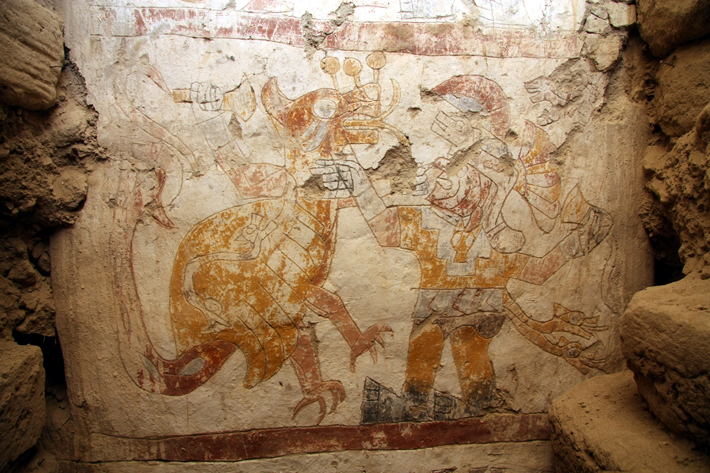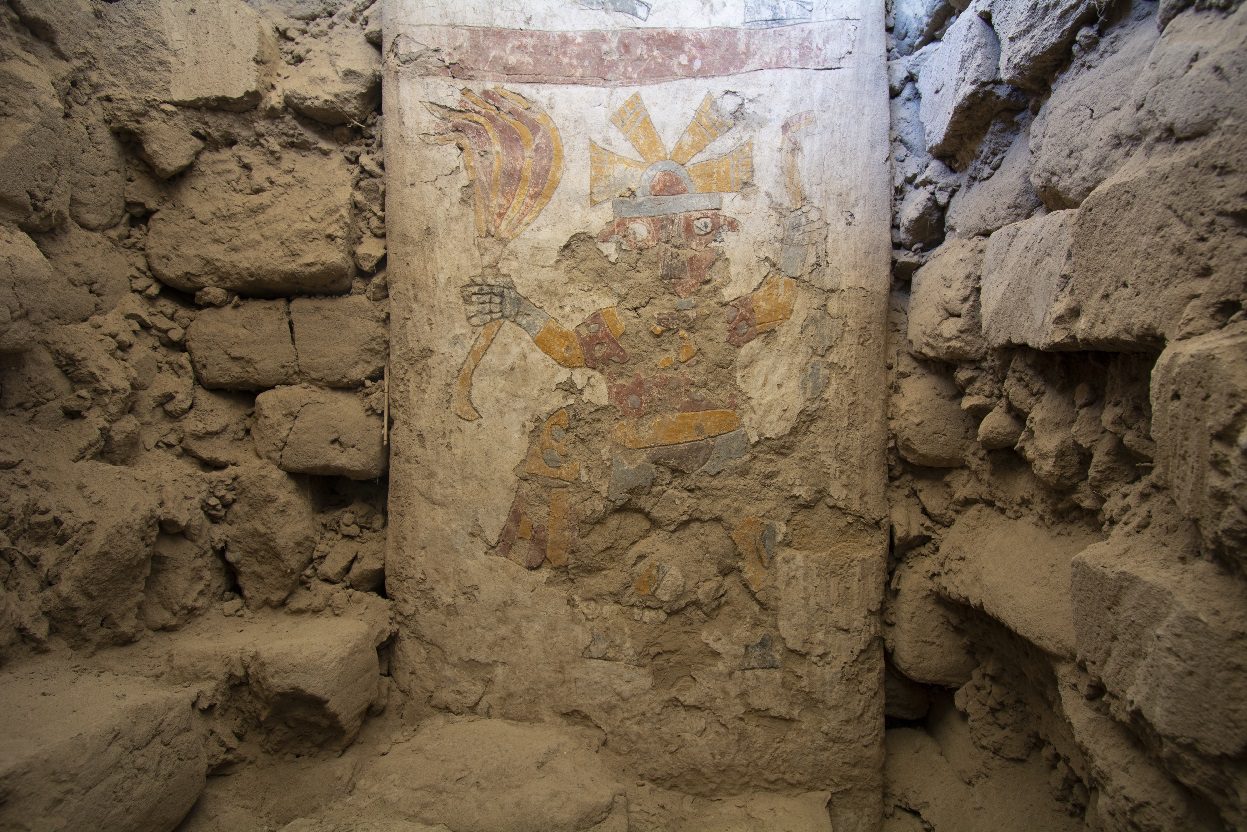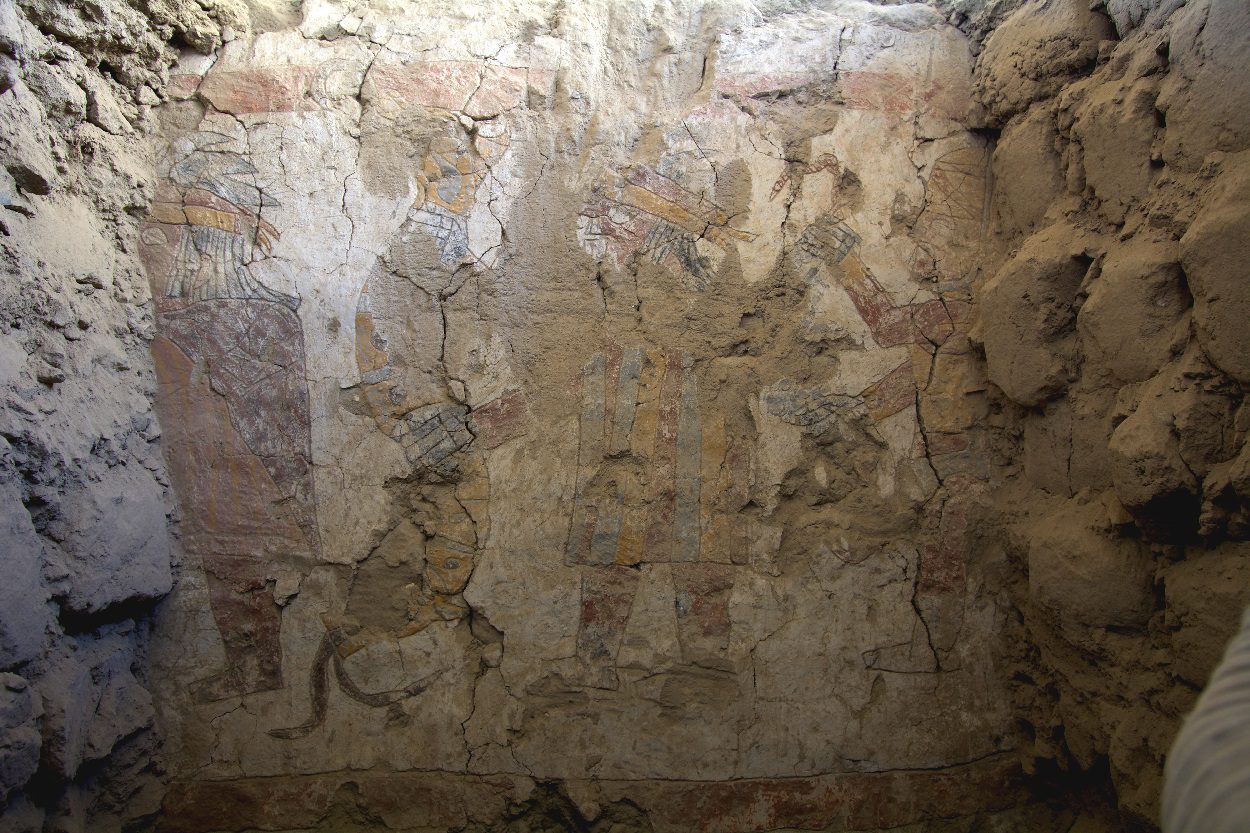Archaeologists from Columbia University and the Denver Museum of Nature & Science (DMNS) have uncovered a ceremonial hall associated with the Moche culture, containing 1,400-year-old murals depicting two-faced figures.
The Moche culture, also known as the Mochica culture, is an ancient Andean civilisation that flourished from the 1st to the 8th century AD on the northern coast of Peru. The name is taken from the great site of Moche, in the river valley of the same name, which appears to have been the capital or chief city of the Moche civilisation.

Excavations conducted at the archaeological site of Pañamarca, an architectural complex constructed between AD 550-800 in the Peruvian Ancash region’s lower Nepeña Valley, have revealed adobe walls decorated with 1,400-year-old murals.
Murals painted on a pillar depicts two-faced figures, one of which is shown holding a feather fan and a goblet with four hummingbirds, while the other figure is holding a feather fan and staff.

 100vw, 1250px” data-lazy-src=”https://www.heritagedaily.com/wp-content/uploads/2023/03/moche2.jpg” /></p>
<p>Image Credit : Lisa Trever</p>
<p>Other murals have been uncovered in various states of preservation showing individual figures, or one scene that depicts multiple figures standing alongside an anthropomorphic serpent.</p><div class='code-block code-block-5' style='margin: 8px 0; clear: both;'>
<div id=)




 100vw, 1250px” data-lazy-src=”https://www.heritagedaily.com/wp-content/uploads/2023/03/moche3.jpg” />Image Credit : Lisa Trever</p>
<div class='code-block code-block-2' style='margin: 8px auto; text-align: center; display: block; clear: both;'>
<script async src=)






